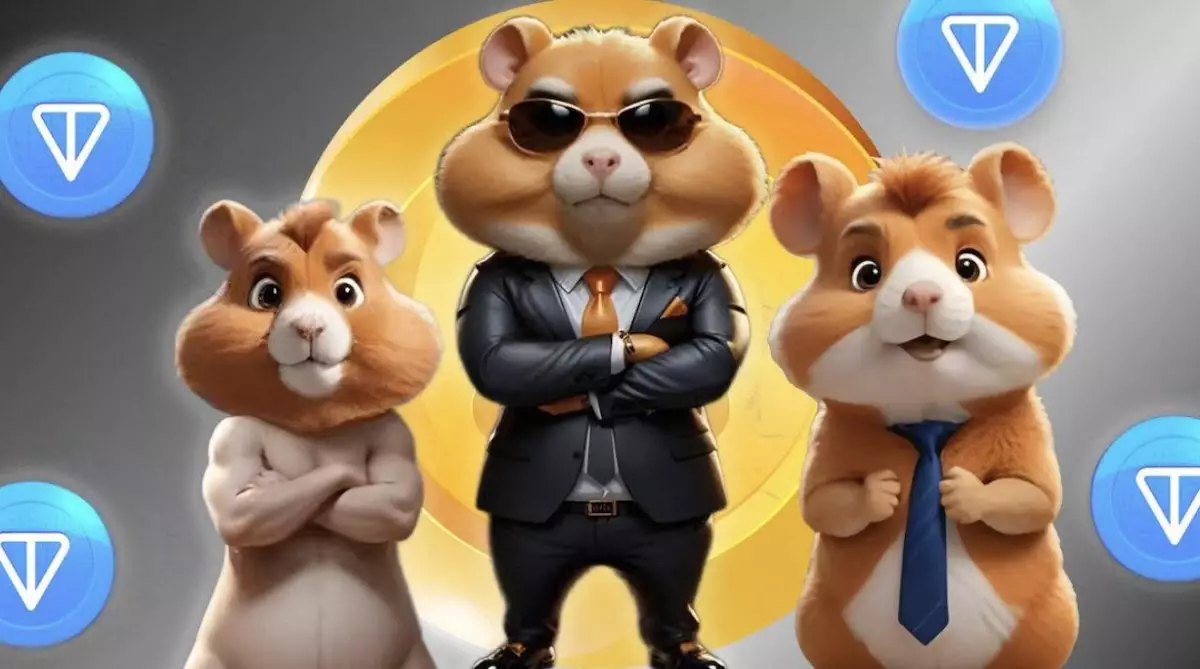The Telegram-exclusive clicker game, Hamster Kombat, has embarked on an ambitious journey that stretches well into 2025. The development team behind the game aims to not only establish a foothold in the blockchain gaming landscape but also to innovate the gaming experience itself. Their extensive roadmap includes plans to integrate NFTs as in-game assets, create a decentralized gaming platform, and build a unique token economy. Recognizing the growing popularity of blockchain technology, the team aspires to reposition Hamster Kombat from being a mere idle clicker game into a transformative platform for both casual gamers and blockchain enthusiasts.
At the core of Hamster Kombat’s development is the incorporation of non-fungible tokens (NFTs) as significant game assets. This shift is poised to dramatically alter the way players engage with the game. By allowing ownership, trading, and monetization of items within the game, players can develop a sense of investment that’s often lacking in traditional gaming formats. For many gamers, financial stakes can enhance engagement, leading to a more devoted community. In conjunction with this, the introduction of a clan championship suggests that the competitive aspect of the game could attract new players and collectors, further fostering a vibrant community within the platform.
Perhaps the most groundbreaking ambition outlined in Hamster Kombat’s roadmap is the development of a comprehensive Web3 gaming platform. The team envisions transforming their game into a staple within a broader gaming ecosystem that bridges user-friendly Web2 experiences with the decentralized qualities of Web3. By shifting to this model, they hope to capture the charm of traditional gaming while fostering transparency and creativity characteristic of blockchain technology. This innovative approach not only aims to provide an effortless experience for gamers but also positions Hamster Kombat as a potential leader in a new wave of decentralized gaming.
Central to Hamster Kombat’s strategy is the creation of a sustainable token economy revolving around the newly launched HMSTR token. Utilizing proceeds from the game’s advertising network, the team plans to initiate buyback schemes that will burn a portion of the tokens in circulation. This approach endeavors to create token scarcity, which could subsequently drive up the value of HMSTR. The implications of this strategy are noteworthy as speculation about the token’s future unfolds. While some experts express enthusiasm over its market viability, others exercise caution, underscoring the volatility of cryptocurrency. Regardless, the team’s commitment to developing an engaging and sustainable token economy is evident.
Moreover, the recent airdrop of HMSTR tokens ignited mixed reactions among the gaming community. From a pool of 300 million players who had engaged with Hamster Kombat, only 131 million qualified for the token distribution, leading to disappointment among many who felt overlooked, particularly those excluded for alleged cheating. Compounding these concerns was the disappointing size of rewards that some players received. The aftermath saw an immediate decline in the token’s price, with reports indicating a significant drop following the airdrop. This downward trajectory hints at the fragility of market responses in such a nascent ecosystem, raising questions about player trust and market stability.
Despite these challenges, the roadmap for Hamster Kombat continues to pulse with potential. Plans for a second season indicate the team’s ambition to diversify its offerings and rekindle interest in its ecosystem. Furthermore, strategies aiming to stabilize token prices while fostering gameplay innovation can set a precedent for the balance between user engagement and economic viability that characterizes successful blockchain games. The ongoing evolution may not only cement Hamster Kombat’s position but also define a model for blockchain games on Telegram and other platforms.
As one of the pioneering titles within the Telegram gaming realm, Hamster Kombat stands at the cusp of a exciting, albeit uncharted, territory. The outcomes of its experiments with NFTs, token buybacks, and community-driven initiatives will serve as a litmus test for the broader blockchain gaming industry. With the increasing inclination toward decentralized gaming experiences, the stakes are high. Only time will tell whether Hamster Kombat can fulfill its ambitious goals and carve out a lasting identity within the evolving landscape of Web3 gaming. As trends evolve, its journey will undoubtedly captivate the attention of gamers and investors alike, spotlighting the potential for innovation wrapped in community-driven engagement.

